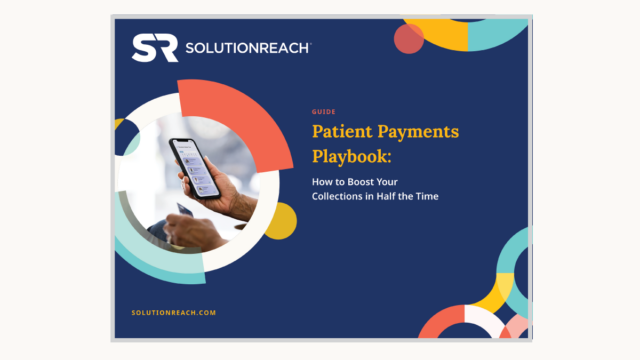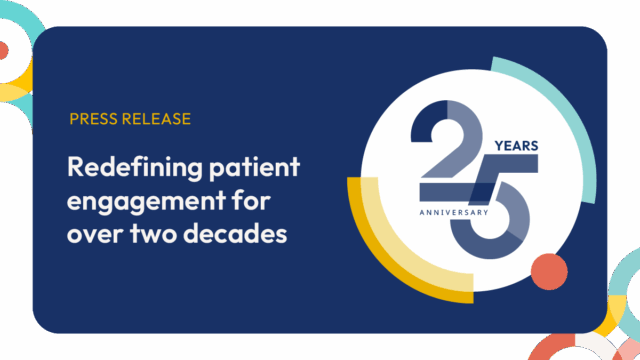There’s no question that the most important single way you can engage patients more effectively and fully is through successful patient messaging. Your practice’s ability to connect meaningfully with your patients can help ensure they get the quality care they need while also offering them an unsurpassable patient experience.
Patient messaging that’s easy, convenient, and reliable resonates with today’s healthcare consumers because it supports increased patient satisfaction and loyalty and improves retention rates. While text messaging is the go-to option preferred by most patients regardless of age, offering your patients communication options and matching their individual preferences is key to long-lasting success. One poll found 80% of patients prefer having an option to communicate with healthcare providers digitally, whether via SMS texting, online forms, or other digital channels.
In this article, we’ll look at how evolving patient messaging techniques give you greater opportunities to hold an ongoing conversation with each patient. We also look at tips and best practices to leverage patient messaging to broaden patient access and achieve next-level patient engagement.
Why is texting the most effective patient messaging method?
Text messaging has become the most popular way for healthcare practices to connect with patients for a number of important reasons. Some of these include:
- Texting is quick, easy, and convenient for patients.
- Your patients already use texting to communicate with retail and other businesses, and they want the same experience with providers.
- Patients of all ages prefer texts to email and voicemail.
- Most people open and respond to a text within 2 minutes. Response rates to emails and voice are significantly lower.
- Texting helps you reduce no-shows and late cancellations while allowing staff members to follow up with patient support before and after the appointment.
How to Improve Patient Messaging in 2024
1. Above all, stay HIPAA-compliant
To make sure your office stays HIPAA-compliant, always get written consent from a patient before sending them text messages. Patients must also opt-in to receive marketing-related texts from your practice. Finally, when patients text questions, consultations, or concerns regarding their health, treatment plan, or diagnoses, it’s important to clearly communicate that you need their consent before continuing. These best practices help protect patients’ privacy and health information while reducing your office’s risk and liability.
2. Keep messages brief and professional
Whether it’s an appointment reminder, recall notification, intake request, or payment reminder, only include necessary details along with a clear call to action of what the patient needs to do. Where possible, place a secure link in the text message or direct the patient to contact your office to complete the necessary step.
3. Use texts to follow up with patients and provide ongoing patient support
Patient messaging isn’t just for reminders and confirmations, though those are great starting points. Ensure you elevate the patient experience by using messages to connect with, guide, and support patients before and after an actual appointment. From pre-visit arrival instructions to post-visit care instructions and follow-up inquiries, text messages help you better guide patients to increase patient adherence and compliance. Clear and consistent message instructions help avoid patient confusion, build trust, and create more loyal patients, boosting retention rates.
4. Automate your patient messaging
You’re not really tapping the full potential and efficiency of patient text messaging until you automate the process. This ability lets you automatically send patients the right message at the right time, whether it’s a reminder, recall notification, intake request, or post-visit support instruction. Reach more patients more effectively while minimizing no-shows and reducing staff manual task hours and workload. You’ll boost office productivity, fill gaps in your schedule, and increase appointment volume.
5. Expand patient access via real-time conversations
Patients have questions, and your practice has answers. But busy patients don’t have time to call your front office or send an email. Real-time, two-way texting allows patients to pose questions, reschedule, or resolve concerns quickly and easily with your staff. This ability enables you to have an ongoing conversation with each patient that improves their access while reducing your office’s phone time. Two-way texting offers patients a more satisfying way to interact with your team. Dental practices, for example, can also have patients with dental emergencies send them a text rather than calling and leaving a voicemail.
6. Expand patient health literacy via targeted patient education
Nothing is more beneficial for you and your patients by getting your patients more engaged and involved in their own care than providing them with relevant patient education about their diagnoses or ailments. Automatically send patients targeted point-of-care health articles and other useful information in patient newsletters based on various demographics like age, gender, diagnoses, or last appointment. The better armed your patients are with knowledge, the greater the likelihood they’ll be activated and adhere to care and treatments that bring improved patient outcomes.
7. Request patient feedback and reviews
You can’t know what kind of care experience you’re delivering without asking your patients for feedback. Post-appointment patient surveys sent to every patient help you better gauge what you’re doing well and where there’s room for improvement. They also help you get a better picture of what portion of your patient pool would recommend your practice to others. Surveys help patients know you value their insights into your care, build patient loyalty, and improve retention. Similarly, sending patient review invitations to patients helps build your office’s online presence and helps you get more positive online reviews, which grows your patient acquisition numbers.
8. Expand your practice’s reach with batch messages
It’s impossible to know when a doctor or practitioner will be out sick or when inclement weather will lead to temporary closures at your office. A batch messaging capability saves your staff valuable time when seconds count, and you need to quickly reach any number of scheduled patients to alert them of a provider illness or a weather-related closure. You can efficiently notify patients about schedule disruptions and enable them to easily reschedule their appointments without needing your entire staff to make last-minute calls.
9. Get paid quicker
Instead of lengthy delays inherent in your manual accounts receivable process, simplify your revenue cycle by automatically sending patients text message payment reminders and notices. In place of confusing and expensive paper billing reminders, patients get up-to-date balances and can conveniently make a payment immediately with their smartphone and a credit card. Shorten your A/R days and improve your collections rate with effective patient payment messaging.
Key Takeaways
An effective patient messaging strategy is vital to the success of your healthcare office. Personalized patient messaging helps you connect better with patients so you can book more appointments, minimize no-shows and late cancellations, and ensure your office gets paid sooner. Similarly, interacting with patients at each stage in their appointment process reduces disruptions, streamlines your workflow, and helps them have a more satisfying patient experience. An all-in-one patient communications platform can give you the ability to reach patients more meaningfully and efficiently, increasing your office productivity while expediting and growing your revenue cycle.

To learn more about how you can get paid faster and decrease your A/R cycle, download the free guide, “Patient Payments Playbook: How to Boost Your Collections in Half the Time.”
Read the Guide


